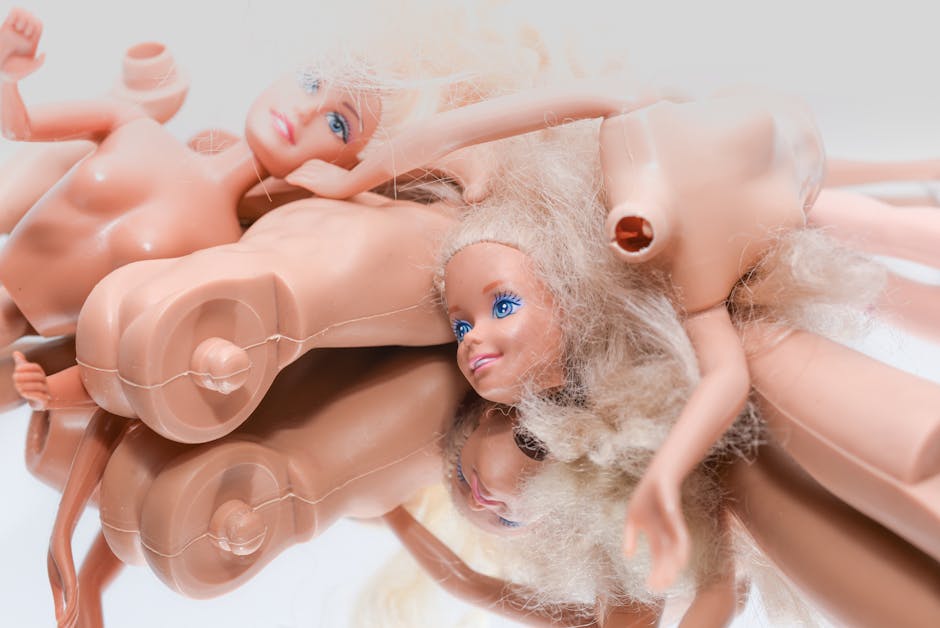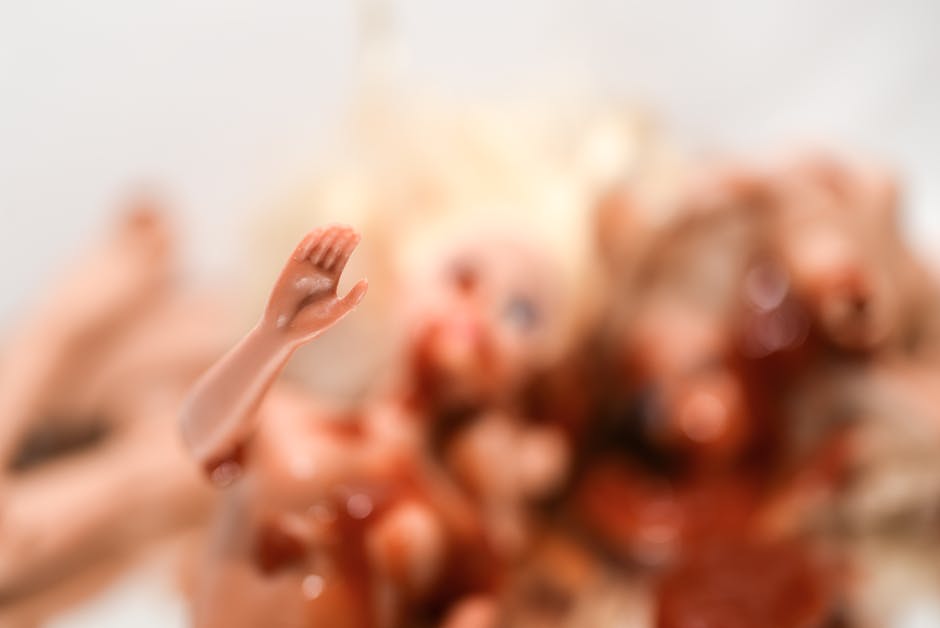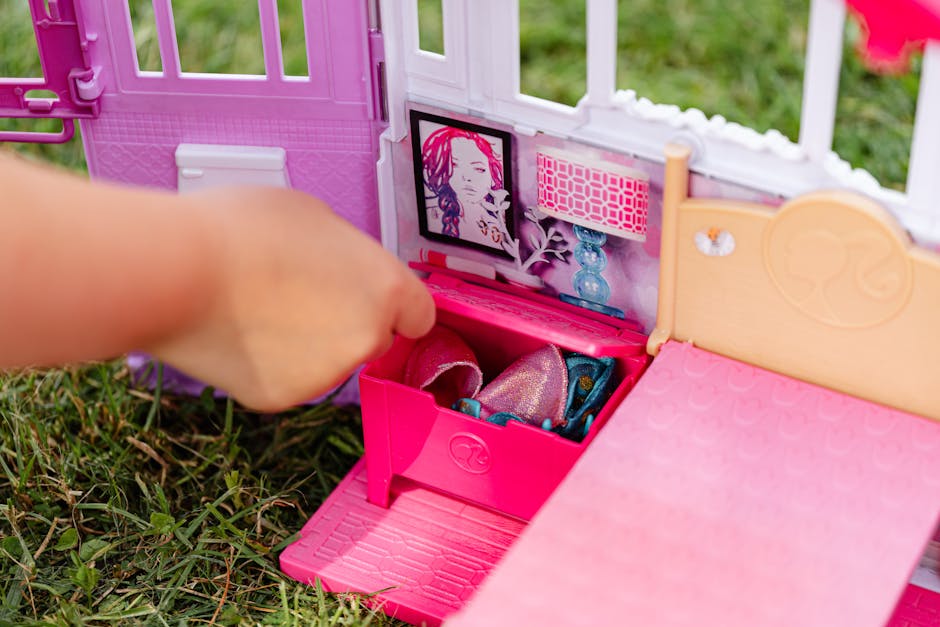The Evolution of Barbie
Remarkably remembered and nostalgically appreciated, Barbie has been a captivating icon in the toy industry for over 60 years. Mirroring societal changes and progression, she is more than just a pretty face on the kids’ department shelves.
This post isn’t just a stroll down memory lane, although Barbie's history is indubitably embedded in our cultural fabric. We aim to explore the evolutionary journey of Barbie that interestingly aligns with the ebb and flow of societal changes. From her debut as a “teenage fashion model” doll in 1959 to her contemporary incarnation as an astronaut, coder, politician, and more, the transformations Barbie has gone through are as fascinating as they are influential.
Join us as we delve into the dynamic transformation of Barbie, a phenomenon that reflects our societal transitions across decades.
The Inception of Barbie in 1959

Photo by Skitterphoto on Pexels
Barbie, an iconic doll that has shaped the societal concepts of femininity and beauty, was introduced to the world in 1959. The brainchild of Ruth and Elliot Handler, the idea stemmed from their observation of their daughter Barbara's fascination with paper dolls.
Observing her frequently engage in adult role-play with the dolls, Ruth envisioned creating a three-dimensional adult doll, a stark contrast to the baby and toddler dolls prevalent at that time. This groundbreaking idea met with initial resistance but eventually won the executives over at Mattel, the company co-founded by the Handlers.
Thus, Barbie, named after their daughter, was born. This embodiment of adult beauty and fashion was set to revolutionize the global toy industry, unbeknown to its creators at the epic launch at the New York Toy Fair.
The 1960s-Barbie's Early Evolution
In the 1960s, a significant transformation began in Barbie's world. The quintessential, iconic blonde, fashioned after the original 1959 model, came through alterations in both her aesthetic and domestic life.
For starters, her hair diversified from the iconic ponytail to include bouffants, flips, and the controversial 'Bubblecut' hairstyle, catering to the changing trends of the decade.
Also, Barbie's wardrobe evolved. It expanded from basic fashion staples to include clothes for skiing, skating, picnics, and even astronaut suits! The accessory repertoire also grew to include pets, cars, and furniture, increasing the scope of play and imagination for young girls.
But the highlight was undoubtedly the introduction of Ken in 1961 - Barbie's steady boyfriend. His arrival signified Barbie's evolving social life and developed a relationship dynamic, hence, progressing beyond the realm of mere fashion and beauty.
Thus, Barbie's early evolution mirrored the changing cultural and societal norms of the 1960s.
The 1970s & Barbie Shaping Society's Perception

Photo by Skitterphoto on Pexels
As the 1970s dawned, Barbie began to shape society's perception, breaking norms and pushing boundaries.
The decade was characterized by dramatic cultural shifts, mirrored by Barbie's evolution. For the first time, Barbie was not just a pretty-faced doll but a reflection of the liberated, career-focused woman.
She stepped into the role of an astronaut, three years before a human woman could step into space. Then, she transitioned into a surgeon, showcasing a woman's capability in a male-dominated profession.
These transformations did more than diversify Barbie's resume. They shaped society's perception, reassuring generations of young girls that their dreams and aspirations could, indeed, become their reality. Barbie became a symbol of change, reflecting women's liberation and the new wave of feminism.
The impact was profound and irrefutable, forever altering society's narrative on gender roles.
1980s Barbie, Diversity, and Inclusion

The 1980s were a pivotal time in Barbie's evolution, marked by a move towards greater diversity and inclusion.
In 1980, Barbie saw her first Black and Hispanic dolls, a significant stride in representing more varied ethnicities and cultures. Going beyond the traditional white, blonde Barbie, these new dolls challenged the established norms.
Black Barbie, stylishly donned in a sparkling red dress, made her stand with grace. Hispanic Barbie followed, radiating charm in a ruffled Flamenco-inspired couture, showcasing cultural heritage with the same elegance.
These introductions were trailblazers, serving as just the first steps towards greater representation. Barbie was no longer just a doll, she became a symbol of global diversity, reflecting the world's changing landscape.
Looking back, it's clear that these progressive changes in the 80s set the path for the diverse range of Barbie dolls we see today.
1990s Barbie Encounters Societal Changes and Modern Careers
The 90s marked a defining moment for Barbie, as she broke from traditional career norms. She pivoted to mirror societal developments, depicting modern women's expanded role in diverse spheres.
In 1992, Barbie traded her sun hat for a briefcase and ran for president, challenging gender stereotypes. She demonstrated to little girls that they could aspire to the highest office in the United States.
Following this, in 1996, Barbie donned a camouflage uniform, becoming an Army officer. This displayed Barbie's resilience and adaptedness, showing that she was not limited by gender expectations.
Subsequently, Barbie held a rank as a Marine Corps Sergeant, exemplifying profound determination and strength. The evolution of Barbie's career trajectory in the 90s defied conventional expectations, empowering girls by illustrating that they held no bounds, whether in politics or the military arena.
2000s Barbie and The Body Image Controversy
In the 2000s, Barbie became a flashpoint for critics, sparking fierce debate about the unrealistic portrayal of women's body proportions. Detractors claimed the iconic doll's figure fostered unhealthy body ideals, potentially leading to body image issues among young girls.
Critics created a rallying cry for change, highlighting Barbie's unnatural waist-to-hip ratio and impossible real-life measurements. This scrutiny fuelled controversy, casting a lengthy shadow on the otherwise wholesome image of Barbie.
In response to mounting criticism, Barbie's parent company, Mattel, embarked on a pivotal journey to reinvent and evolve their flagship doll. The pressure to portray a more inclusive and realistic body type set in motion significant changes, marking a new era in Barbie's storied history. This evolution sought not just to quell the controversies but to imbue the doll with a message of body positivity and inclusivity.
Diverse Barbie Dolls in the 2010s Representing Multiple Ethnicities, Body Types, and Disabilities

In the 2010s, a significant shift in Barbie's design began to take shape. Mattel, recognizing the need to foster diversity and inclusivity, embarked on an ambitious journey to re-imagine the iconic doll. For the first time, Barbie was released in more than a straight, blonde blueprint.
The company introduced a broad range of Barbie dolls representing multiple ethnicities, body types, and even disabilities. This pivotal move was not just a marketing strategy, but a heartfelt commitment to portray real-world diversity.
Little girls could now find a Barbie that looked like them or their friends, on departmental shelves. It was a step to ensure that every child felt represented, celebrated, and important. This evolution of Barbie symbolized a progressive step in toy history, reinforcing Mattel's inevitable role in shaping societal norms through play.
Recent Years Barbie as a Role Model
In recent years, Barbie has transformed into a symbol of empowerment and inspiration for young girls. The introduction of the 'Shero' and 'Inspiring Women’ series bore testament to this fact.
Both series epitomize powerful and influential women. The 'Shero' series brings to life, in the form of dolls, women renowned for breaking boundaries. From sports personalities like Naomi Osaka to activists like Rosa Parks, Barbie has truly become a beacon of change.
The ‘Inspiring Women’ series, on the other hand, celebrates the milestones of women throughout history. These dolls emulate women who have accomplished awe-striking feats, leading the way for generations of girls to come.
The message is clear: Barbie now represents a broad spectrum of excellence, inspiring young girls to dream big and break their own boundaries. The evolution of Barbie is indeed a reflection of our progressive society.


